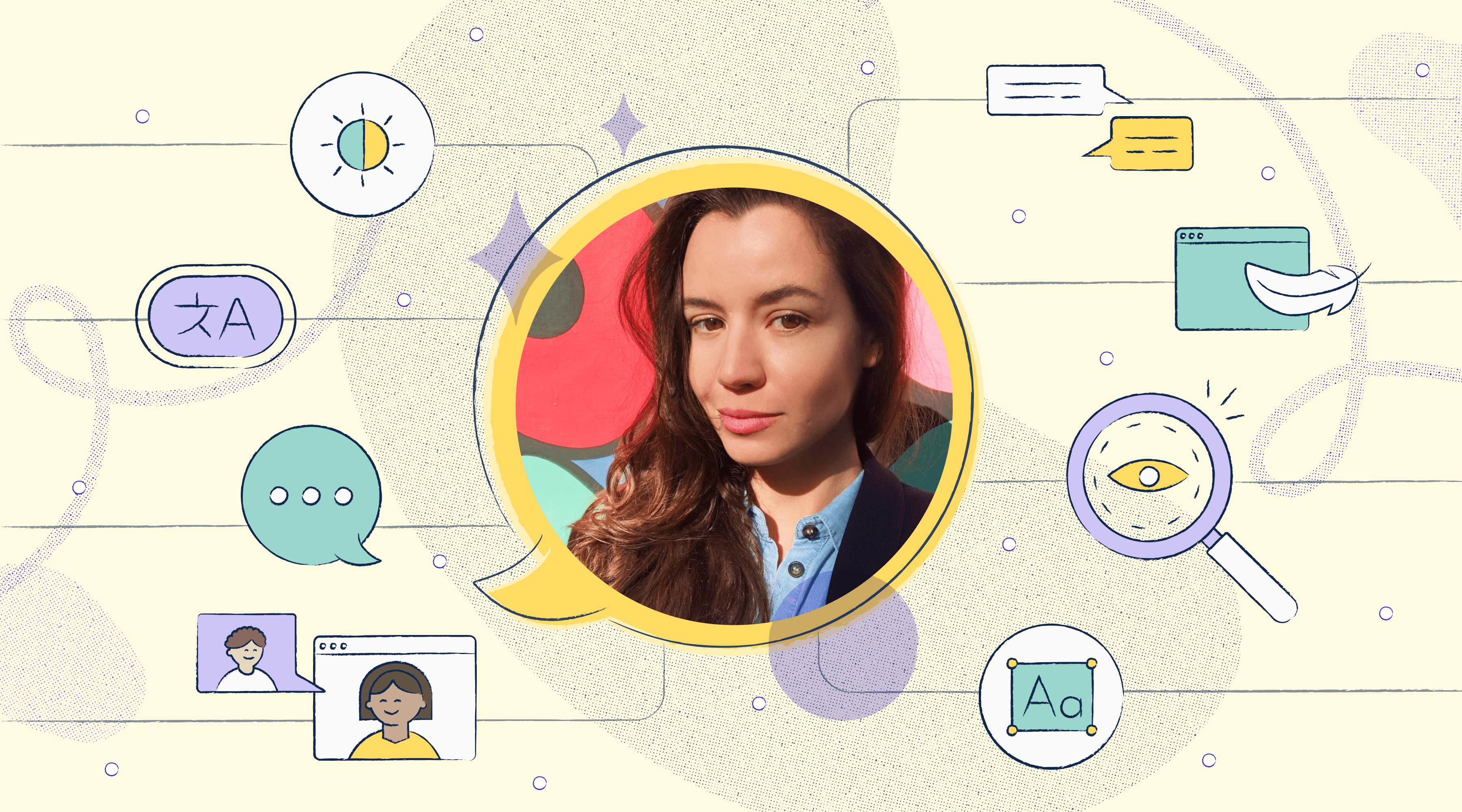Julie Chabin on Product Hunt’s maker and community mindset
Learn all about Product Hunt’s design process, culture, approach to accessibility, and more with design leader Julie Chabin!

Sagal Muse
May 24, 2022

Ever wonder how one of the top communities for discovering new products builds inclusive and accessible experiences? In this conversation with Product Hunt’s Julie Chabin we get a sneak peek into the design team’s process, approach to accessibility, culture, and more.
What is the design culture like at Product Hunt?
I’ve worked at companies where the design team had to fight to have a voice and explain that our mission wasn’t to put a coat of paint over things. This was never the case at Product Hunt. We have a maker mindset and a community mindset too. Everyone has a voice, and everyone can share ideas, create things and contribute to the product.
What are the first few steps you take when tasked with a new design project?
-
Get a fresh glass of Diet Coke (mandatory for me)!
-
Understand the problem — This includes talking to users and stakeholders, researching, and taking notes.
-
Make a plan — Is the project too big to be done or understood by others in one go? If so, then how can we split this into phases?
-
Define success — How will we know if the project is successful?
-
Design — Don’t wait too long to design so you don’t lose momentum. Start sketching, doing user flows, wireframes, etc.
-
Collaborate — Talk with your team, decide together and iterate fast.
How does your team approach accessibility, and how do you measure success?
Our design work has no specific process to "approach accessibility." It's not something we add on top of design; instead, accessibility is simply part of good product design.
While designing, we make sure fonts are legible, colors are easy to see, and feedback is given to users when they perform an action. Text should also be easy to scan and comprehend, designs shouldn’t require high-performance computers to work, and information needs to be organized in a way that makes sense to people.
Additionally, we have to ensure accessibility by using simple copywriting that's easy to understand for our international community. Internally, our work is to educate the rest of the team to remind them of users with accessibility needs, such as those who rely on screen-readers and keyboard navigation.
In terms of measuring performance, we look at two things:
-
Our designs are “light,” so they'll load fast for everyone, including those with an old computer or bad connection.
-
When testing with users, we check if a design is performant by letting testers tell us what they think something is. It shouldn't take too much time or require additional information for someone to understand what an interface is or what it does.
How much research goes into the product to create an inclusive experience for all?
I don’t know if we can quantify research, but we talk to users constantly. We have a dedicated UX researcher whose job is to mainly talk to users and transcribe answers into recommendations. But they aren’t the only person doing so—most of the team is involved.
We also know the community very well. One of my main sources of information is our Head of Support. Before launching a survey or doing interviews, it’s always a good idea to talk to the support team–they know so much.
It’s also important to remember that this is a global platform and a vast community, so we can’t just rely on qualitative research. It has to be accompanied by quantitative data and taking risks.
What does success look like for the design team?
There are different ways of defining success:
-
Product — we’ve reached the goals we set for a project (metrics, satisfaction, etc.). Or we haven’t reached them, but we learned new information that will help us achieve or revisit them.
-
Team — you’ve worked with your teammates, helped find solutions to problems, and communicated effectively.
-
Design — you’ve followed our internal design goals: accessibility and efficiency. You’ve designed and delivered what was needed for the project.
Even then, organizational and product goals aren’t the only things that matter. Internal communication, working with your teammates, and being reliable are even more important. For this, we rely on internal feedback and frequent check-ins.
How do you action failure?
Product design is about experimenting, so failure is a normal part of the process. It shouldn’t scare you and prevent you from taking risks in the future. However, not reaching the desired results is an opportunity to re-evaluate goals and assumptions.
At Product Hunt, we try everything to avoid failure with the parameters we set around success. But if failure does occur, we create a personalized plan to try and understand why and how we can correct the situation.
What are your best tips to foster a strong design culture?
Let everyone who wants to be involved in design thinking join in. Organize workshops or work together on small projects. Ask questions. Take the time to listen to everyone’s ideas, and work with them. Be public and unashamed of failed experiments to show that taking risks is acceptable. Be the loudest advocate for your users.
What advice would you give to a team that’s just getting started with accessible design?
It's sometimes difficult to convince stakeholders to invest efforts in creating accessible designs, but I assure you, it's worth the discussions and the fights even. You also have to understand that being accessible isn't just a score given by tools—it's making sure that what you're designing isn't excluding people you intended to welcome.
Additionally, notice the words you show in your UI. Be careful about the images you pick to present your product or your users. Think about those with older computers and smaller screens. Think about the people who speak your language but maybe not at the same level. How do you make sure your designs are accessible to them? Remove as many obstacles as you can for your users.
Julie Chabin is a Product Designer from France, working in tech for over 15 years. She's the Head of Design at Product Hunt.
Enjoyed this community feature? You can connect with Julie and the rest of our community of designers, developers, and product managers via Slack, or feel free to share your thoughts on Twitter and Instagram.